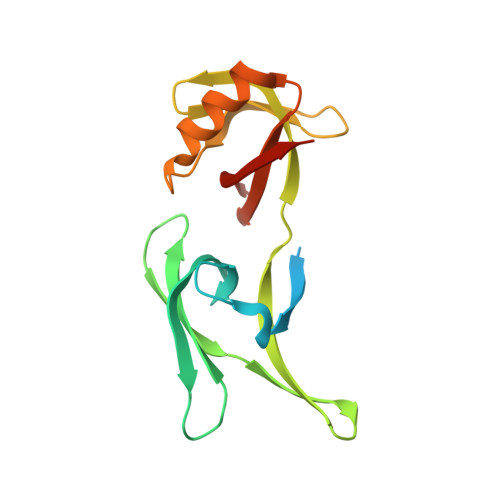Fixed-target serial femtosecond crystallography using in cellulo grown microcrystals.
Lahey-Rudolph, J.M., Schonherr, R., Barthelmess, M., Fischer, P., Seuring, C., Wagner, A., Meents, A., Redecke, L.(2021) IUCrJ 8: 665-677
- PubMed: 34258014
- DOI: https://doi.org/10.1107/S2052252521005297
- Primary Citation of Related Structures:
7ASI, 7ASX - PubMed Abstract:
The crystallization of recombinant proteins in living cells is an exciting new approach in structural biology. Recent success has highlighted the need for fast and efficient diffraction data collection, optimally directly exposing intact crystal-containing cells to the X-ray beam, thus protecting the in cellulo crystals from environmental challenges. Serial femtosecond crystallography (SFX) at free-electron lasers (XFELs) allows the collection of detectable diffraction even from tiny protein crystals, but requires very fast sample exchange to utilize each XFEL pulse. Here, an efficient approach is presented for high-resolution structure elucidation using serial femtosecond in cellulo diffraction of micometre-sized crystals of the protein HEX-1 from the fungus Neurospora crassa on a fixed target. Employing the fast and highly accurate Roadrunner II translation-stage system allowed efficient raster scanning of the pores of micro-patterned, single-crystalline silicon chips loaded with living, crystal-containing insect cells. Compared with liquid-jet and LCP injection systems, the increased hit rates of up to 30% and reduced background scattering enabled elucidation of the HEX-1 structure. Using diffraction data from only a single chip collected within 12 min at the Linac Coherent Light Source, a 1.8 Å resolution structure was obtained with significantly reduced sample consumption compared with previous SFX experiments using liquid-jet injection. This HEX-1 structure is almost superimposable with that previously determined using synchrotron radiation from single HEX-1 crystals grown by sitting-drop vapour diffusion, validating the approach. This study demonstrates that fixed-target SFX using micro-patterned silicon chips is ideally suited for efficient in cellulo diffraction data collection using living, crystal-containing cells, and offers huge potential for the straightforward structure elucidation of proteins that form intracellular crystals at both XFELs and synchrotron sources.
- Institute of Biochemistry, University of Lübeck, Ratzeburger Allee 160, 23562 Lübeck, Germany.
Organizational Affiliation:
















